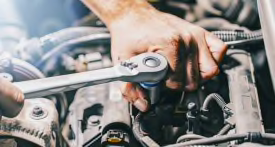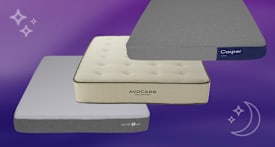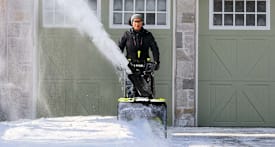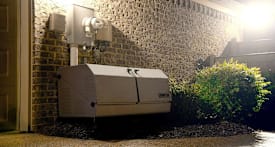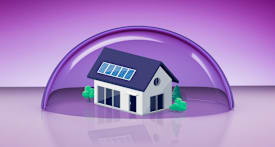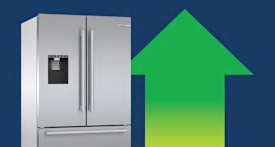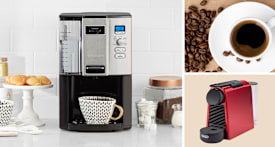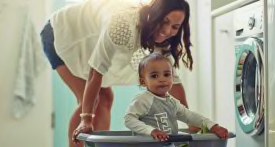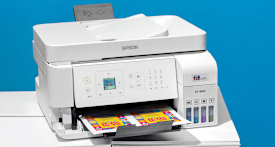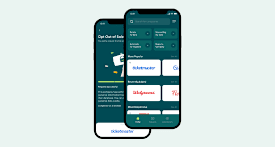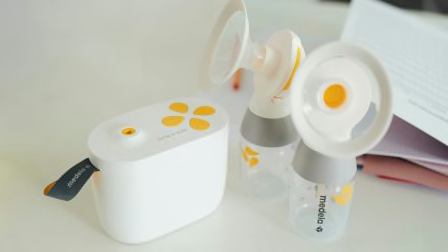How to Store Breast Milk and Formula for Your Baby
Here’s what to know about safe storage for breast milk and formula—including what to do with leftover formula or milk
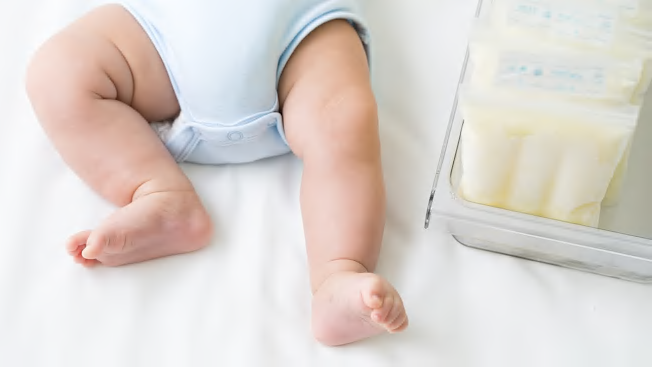
I admit I sometimes play a little Russian roulette with my leftovers. Hot dogs that have been in the back of the fridge for who-knows-how-long? Looks fine! This rice that’s been left out overnight? How bad could it be! (Actually, pretty bad! says my digestive system. I’m a rebel, what can I say.)
But this is definitively not how I approach breast milk and formula storage and leftovers. Babies have immature immune systems until they’re around 2 to 3 months old, and what may be an unpleasant 48 hours for an otherwise healthy adult can be devastating for a baby. That’s why safely storing pumped breast milk or formula—whether powdered, ready-to-drink, liquid concentrate, or already prepared—is critical.
Here’s what to know about safe storage for breast milk and formula—including what to do with leftover formula or milk.
What’s the Danger With Leftover Breast Milk and Formula?
Like most foods, breast milk and formula contain bacteria. Breast milk contains more than 200 types of naturally occurring bacteria, including lactobacillus, staphylococci, and streptococci, to name a few, although each lactating person’s breast milk microflora is different. And in both ready-to-feed and powdered formula, bacteria can be introduced through the process of preparation, handling, or serving.
Safe handling of breast milk and formula can significantly reduce your baby’s risk of getting sick. So while the “rules” of safe handling may seem tricky at first, the benefits far outweigh any downsides. “The goal of these recommendations is to limit bacterial growth in milk and preserve the factors that are beneficial to an infant’s immune system,” says Kristina Tucker, MSN, RN, IBCLC (International Board Certified Lactation Consultant), and the Assistant Clinical Director of Nursing, Women’s Services, at Texas Children’s Hospital.
Thankfully, safe storage of breast milk and formula isn’t that hard once you get the hang of it—although as a new mom, I can personally attest to the work of keeping all those little breast pump parts clean.
How to Get Insurance to Pay for Your Breast Pump
It isn’t as difficult as you might think. See our step-by-step guide.
How to Store Breast Milk
A long list of factors affect how long any perishable can last before going bad—and that goes for breast milk, too. The temperature and cleanliness of the room where you’re expressing milk, temperature fluctuations in your fridge, freezer, or cooler, and a ton of other environmental variables all impact the lifespan of breast milk. So, in most day-to-day situations, it’s best to take a conservative, better-safe-than-sorry approach to breast milk storage.
What Are the Best Containers for Storing Breast Milk?
The Centers for Disease Control and Prevention advises washing your hands well with soap and water before expressing or storing breast milk, then using a clean glass or plastic container intended specifically for food or breast milk. These containers should come with tightly fitted lids — so if you’re refrigerating breast milk in a bottle that you intend to serve later that day, it’s safest to top it with an airtight cap rather than a nipple cap.
How Long Does Breast Milk Last?
Breast milk that has just been expressed or pumped can remain at room temperature (77° F or colder) for up to 4 hours, in the fridge for up to four days, and in the freezer for up to six months. The CDC says you shouldn’t keep breast milk in the fridge or freezer door because these spaces are more prone to temperature fluctuations. It’s smart to label milk with a “use by” date and time when you put it into the fridge.
How Long Does Frozen Breast Milk Last?
Even when frozen, the nutrients in breast milk break down over time, so try to avoid feeding your baby milk that has been hanging out in the freezer for longer than six months. After you’ve pulled breast milk from the freezer to thaw in the fridge, use it within 24 hours from when it’s totally thawed. If it’s room temperature or you’ve warmed it up, use it within 2 hours. Be sure to practice FIFO: First in, first out. Clearly labeled and carefully organized milk containers make that easier, so label the milk with the date and time it was expressed.
How to Store Formula
When I stopped breastfeeding and started giving my son formula instead, I breathed a sigh of relief: not worrying about pumping during the workday or constantly washing a barrel of tiny pump parts made my life so much easier. But I also had to learn how to properly serve and store powdered formula, which for me was a slightly anxiety-inducing task. Luckily, it’s not as difficult as my brain, hormonal from the weaning, made me think it was.
First things first: Different types of formula may have different storage requirements. There’s ready-to-feed formula, which you pour from the container directly into the bottle (some ready-to-feed containers come with disposable nipples); formula concentrate, which you mix with tap or bottled water before serving; and powdered formula, which you also mix with either tap or bottled water. In the U.S., tap water is typically safe. If you have well water or if you’re unsure about the safety of your local water, contact your local health department.
How Long Can a Bottle of Baby Formula Sit Out?
Once you’ve mixed your concentrate or powdered formula, you should use it within 2 hours if it’s room temperature or 24 hours if it’s refrigerated. Ready-to-feed formula should be used within 2 hours at room temp or 48 hours if refrigerated, and formula concentrate that has been opened but not mixed has a 48-hour refrigerated shelf life. (And be sure to wash your hands with soap and water before making a bottle.)
Need help choosing the right baby formula? Start here: CR’s infant formula buying guide.
How Long Does Baby Formula Last?
You should use unprepared, unopened powdered formula according to the expiration date listed on the package. If it’s opened, you should use it within one month, according to the CDC, but this may differ by manufacturer. Writing the open date on the lid will help ensure you don’t use formula that has been open for too long.
What’s the Best Way to Keep Formula Fresh?
You don’t need to refrigerate your containers of powdered formula, though you should store it in a cool, dry place. “When formula is stored in warm and humid conditions, it creates an ideal breeding ground for bacteria. Once contaminated, the bacteria can multiply rapidly,” says Veronica Campbell, RD, LDN, manager of formula and human milk management at Children’s Hospital of Philadelphia. “Consuming formula contaminated with bacteria can lead to serious infections and illness. Higher temperatures can also accelerate the shelf-life and breakdown of nutrients within the formula, compromising its nutritional value.” If you have no other way to keep powdered formula cool and dry, keeping it in the fridge is fine, according to Kimberly H. Barbas, BSN, RN, IBCLC, director of the lactation support program at Boston Children’s Hospital.
You may be bleary during middle-of-the-night feedings, and thus prone to leaving your formula out and open, but “limit the time you have the container lid off and keep a tight container seal during storage,” says Lisa Setchfield, MS, RD, LD, the director of food and nutrition services at Texas Children’s Hospital.
How to Serve Breast Milk and Formula
Just like adults, some babies have discerning palates (side-eyeing my own baby here) while others are happy for any milk or formula however you want to serve it to them. There are a few things, though, that you’ll want to keep in mind when giving your baby milk or formula from a bottle.
Does Breast Milk or Formula Have to Be Served Warm?
Some babies like warm milk or formula, but it doesn’t have to be warm; it can be room temperature or cold. If your baby demands a warm bottle, though, there are a few things you’ll want to do, and several to avoid.
What’s the Safest Way to Warm a Baby Bottle?
A bottle warmer can make heating up a bottle easier, but you can also simply place the bottle of milk or formula in a bowl of warm water or under warm running water for a few minutes. The microwave isn’t the way to go here, though: Just like reheating soup in the microwave can result in an unevenly heated bowl of clam chowder or chicken noodle soup, microwaved breast milk can have hot spots that can burn your baby’s tongue. Microwaving also destroys much-needed nutrients. Best to avoid the stovetop, too, according to the CDC. The same policy applies if your baby demands warm formula; the Environmental Protection Agency advises that caregivers not use hot water to make formula because it’s more likely to contain lead.
Can Breast Milk or Formula Be Too Warm?
When you warm your baby’s bottle, you don’t want to make it too hot—you’re not making baby a latte. “This can affect the live cells and nutrients of the milk,” Barbas says. “It is preferable to just take the chill out of the milk—or bring it to room temperature—which can occur over a short period of time, simply on the counter in room air before a feeding.”
To check the milk or formula temperature, sprinkle a tiny bit of milk or formula onto your wrist to check that it isn’t too hot.
How Long Does Leftover Breast Milk or Formula Last?
Baby didn’t want a full meal? You can still serve leftover breast milk within 2 hours after the baby is finished feeding. “After 2 hours, leftover milk should be thrown away,” says Meghan Devine, BSN, RN, IBCLC, manager of the lactation program and mothers’ milk bank at Children’s Hospital of Philadelphia. Don’t refrigerate or freeze a bottle for later if your baby has already drunk from it. “When your baby feeds from a bottle, bacteria from their mouth can get into the bottle and continue to grow and multiply.” For formula, that time is halved—you get an hour to refeed formula before you have to toss.
Is It Okay to Reheat Breast Milk or Formula?
Formula shouldn’t be reheated, unfortunately. It can encourage bacterial growth and make your baby sick. Likewise, avoid reheating breast milk because that can lead to nutrient loss and encourage bacterial growth. If you need to, though, just reheat it once, says Barbas. “If an infant likes it very warm, and it is rewarmed within one feeding that is likely fine, completing the feed within 2 hours,” she says.
Once you get the hang of it, storing breast milk or formula and feeding your baby from the bottle becomes second nature. Of course, as in my case, you’re going to need to make sure your baby will eat from a bottle at all—because some babies have opinions. Quite strong ones. Once that hurdle is cleared, and bottle feeding is second nature, it’s easy as pie—until it’s time to start feeding them solids. That’s an entirely different story.


